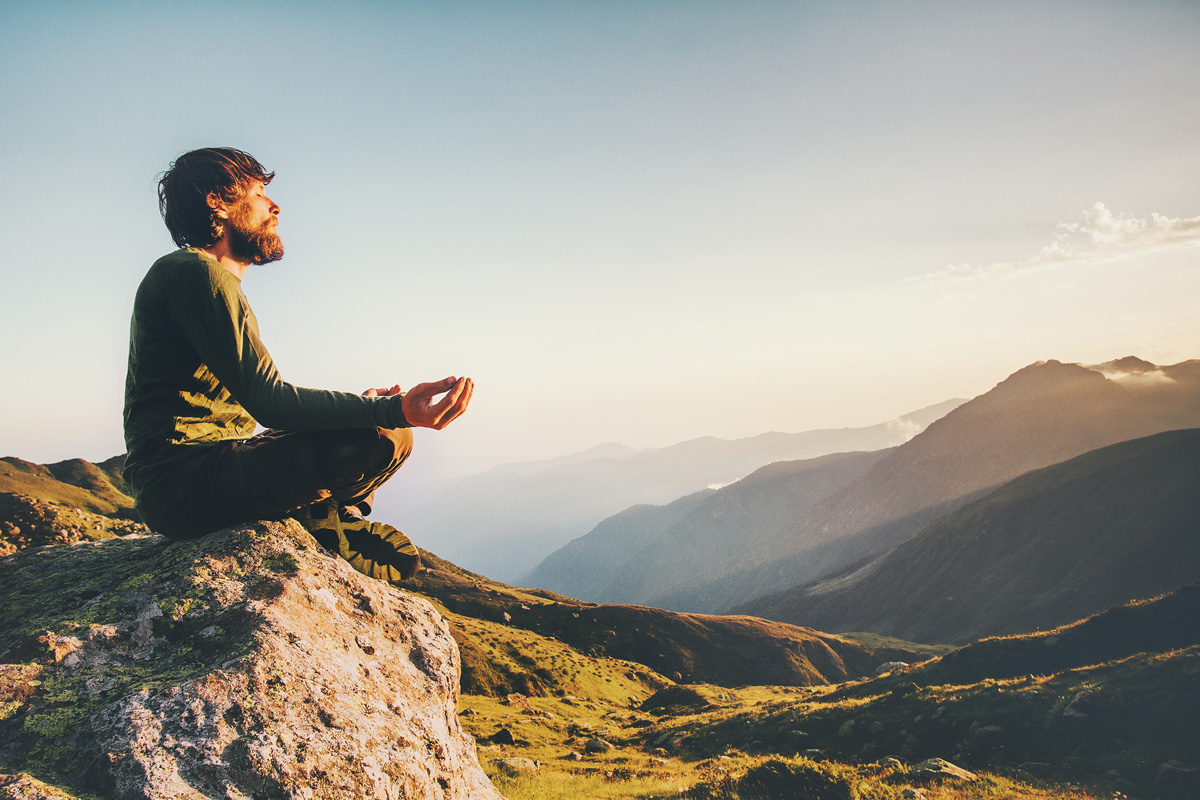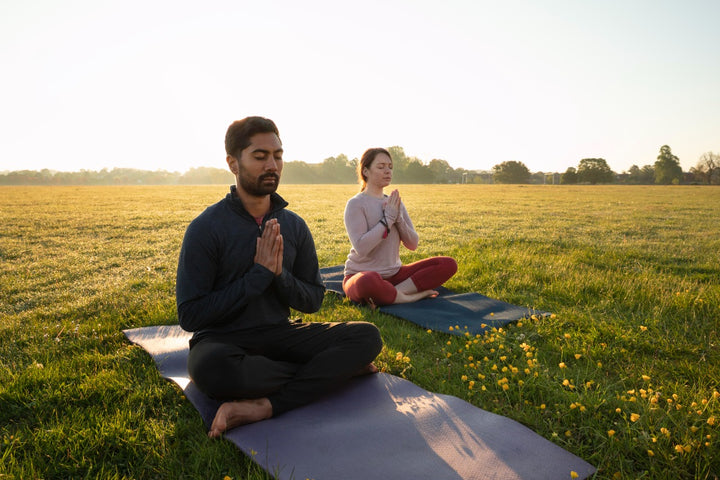Meditation has long been practiced around the world for thousands of years by different cultures and traditions in an effort to achieve deep peace, clarity, and spiritual awareness. It is one of those tools that helps a person dive beyond the many distractions of the mind to look into stillness and silence and connect with one's inner self. In this complete and comprehensive guide, we will delve deeper into what meditation is, how to meditate, different methods from Buddhism, and insights from world-renowned spiritual teacher Eckhart Tolle. This blog will help every beginner and the most experienced practitioner deepen their meditation practice.
What is Meditation?
Meditation basically refers to focusing one's mind on a certain object, thought, or activity with the intention of achieving mental clarity and emotional calmness. Initially, meditation served as an ancient technique meant to cultivate spiritual growth and enlightenment but, nowadays, it is used more loosely by all walks of life to supposedly relieve stress, improve concentration, and enhance overall well-being.
Meditation" comes from the Latin word meditatio, which means "to contemplate." It extends from "seated mindfulness meditation" to "walking meditation" and to anything that fits into one's preference and lifestyle.
Benefits of Meditation
Scientifically proven benefits of meditation and many more in the following extensive list.
- It reduces stress; meditation calms the nervous system, reduces cortisol levels, and thus enhances stress management better.
- It helps improve focus and concentration. Regular meditation sharpens the mind and improves concentration, memory, and cognitive skills.
- It enhances emotional well-being. Meditation provides self-awareness, helps control emotions, and improves mood and happiness.
- It increases self-reflection and awareness. Meditation promotes mindfulness so that people better understand themselves and develop a more mindful approach to living.
Facilitates spiritual growth: For many, meditation is a spiritual activity that expands their thoughts towards an understanding of existence, the self, and the nature of the universe.
How to Meditate: A Step-by-Step Guide
If you are new to meditation, getting started can be overwhelming. But as I said, meditation is quite simple, requiring practice rather than complexity. Here's a step-by-step guide to help you get started:
1. Choose a Quiet and Comfortable Place
Sit down in a quiet area where you can sit comfortably and not distracted. This, for example, could be a corner of your room, or it could be a garden, or your office when you are taking a break. See to it that the atmosphere is calm.
2. Sit Comfortably
Sit comfortably. The lotus position, though very commonly used in meditation, is not necessary. You can sit in a chair or on a cushion. Keep your back straight so that you remain alert.
3. Close Your Eyes and Focus on Your Breath
Start by closing your eyes and then shifting your focus to your breath. Listen to the cool feeling as you breathe in and the warmth as you breathe out. Do not try to control your breath; simply observe.
4. Bring the mind back to your breath
Your mind will drift, especially if you are a novice to meditation. In that case, you can gently bring your focus back onto your breath. Meditation does not involve stopping your thoughts, but it enables you to passively observe those thoughts.
5. Hold for 5-10 Minutes (Or Longer)
It's possible to begin with a few minutes per day and gradually work your way up as you get more comfortable. The most important thing is to maintain a patient and diligent attitude.
6. Gradually open the eyes and reflect
At the end of your meditation session, slowly open your eyes, and look into what you really experienced. Observe how you feel within your body and mind.
A Way to Enlightenment: Buddhist Meditation
It has one of the longest-lived traditions of meditation in the world, practices developed and perfected during thousands of years. In the Buddhist canon, meditation is listed as one of the central ways to enlightenment. It allows a person to acquire very deep insights into the nature of reality, impermanence, and the end of suffering.
Forms of Buddhist Meditation
Two primary forms of Buddhist meditation can be distinguished: Samatha and Vipassana.
1. Samatha Meditation
Samatha meditation targets calming the mind by developing the intellect of concentration. As normally, the focus object is applied by most of the practitioners like the breath, candle flame, or mantra, and concentration it supports gains stability for sometime leading to inner peacefulness and stillness.
How to Practice Samatha Meditation:
- Sit in a quiet space with straight back and close your eyes.
- Pay attention to the feeling of breath as it enters and leaves the nostrils.
- As you get distracted, do not try to review it; instead, return your attention to your breath softly.
- Follow this up for a minimum of 10-20 minutes and extend its time with each passing day that you become accustomed.
2. Vipassana Meditation
Vipassana is known as "insight" meditation. Its purpose is to help you acquire deep understanding of the real nature of reality. This is a form of meditation where, through observation, you discern impermanence, suffering, and non-self in change of your thoughts, feelings, and sensations.
How Do You Practice Vipassana Meditation?
Like Samatha, practice begins by turning the focus onto breathing and calming the mind.
Now, when your mind is more relaxed, then simply start paying attention to thoughts, emotions and physical feelings.
Watch each thought or emotion arise and then collapse without attaching to them.
As time goes by, you will start to notice patterns and learn something about the impermanent, interconnected nature of all phenomena.
Eckhart Tolle on Meditation and Presence
Eckhart Tolle, the author of bestsellers such as The Power of Now and A New Earth, is a contemporary spiritual teacher who teaches a rather unique form of meditation that is predicated on the practice of "presence" or "being in the now." In essence, what Tolle emphasizes is that only when we possess true spiritual awakening and inner peace can one not achieve it through effort but by fully inhabiting the present moment.
Eckhart Tolle's Approach to Meditation
Tolle's approach is not traditional meditation but rather keeping oneself in a continuous state of alert awareness about his or her day-to-day life. His teaching is postulated on the assumption that most of us go through life in a daze, either in the past or projecting into the future. Meditation, according to Tolle, is simple: the art of getting back to the present. There lies true peace in the present.
Learn to Meditate the Eckhart Tolle Way
- Be Conscious of the Present: Tolle says, "The easiest form of meditation is simply becoming deeply conscious of the present moment." This may involve attention to your breath, sensations in the body, and sounds around you.
- Wither Away from Thought: Be mindful of the times your mind wanders to thought, either in the past or the future. Bring the awareness back into the present without judgment nor fighting thoughts and emotions.
- "You Are Being": Meditation is not something you "accomplish" or "attain," but rather a form of "being." Whether you're washing dishes, walking, or sitting, you can enter a meditative state by becoming living in the moment, without judgment, or mental commentary.
- Integrate Stillness: Tolle is one of the most vocal writers on the empowerment of stillness. Such is a concept that apparently describes a lack of mental noise, or inner space producing true clarity and insight.
- As taught by Tolle, integrate mindfulness and presence into your lifestyle so that meditation may not only be a formal activity but also a lifestyle.
Tips for Deepening Your Meditation Practice
So, as you continue along this meditation journey, follow these tips to deepen practice and handle problems:
1. Don't be too hard on yourself
Meditation is a journey and not the destination. You're alright to have your mind stray or not find peace immediately. Consistent practice will give way to its benefits.
2. Regular Meditations
Consistency is the key to deepening your meditation practice. Even when you are doing 5-10 minutes a day, try sitting at the same time each day so that it becomes a habit.
3. Use Timer or Application
There are many free applications like Headspace, Calm, and Insight Timer, which guide you in keeping yourself on track, monitoring your progress, and even reminding you of the timing to meditate.
4. Guided Meditation
Guided meditations can be very helpful as a beginner since it will allow you to concentrate. You can find guided meditations through the internet or on a mobile application that will help you maintain concentration in meditation.
5. Try diverse methods
As discussed in the above steps, various meditation techniques are followed. So, try practicing different techniques like focusing on breath, loving-kindness meditation, or walking meditation to find out which one works the best for you.
Conclusion: The Meditation Journey
An ancient practice with deep benefits in the fast-paced life of today, meditation can prove to be very handy for those who are trying to reduce their levels of stress, improve their focus, or even undertaken a path towards spiritual awakening. One finds there are far more practices than one could even imagine: some trace their lineage back to Buddhism, as with the calming practices of Samatha and the insight of Vipassana, while others are formed within the teachings of Eckhart Tolle under the banner of mindfulness.
The beauty of meditation is that it's accessible to every human, regardless of his or her age, background, or belief. One just needs to take up a willingness to sit, breathe, and be in the present. Through the daily routine of meditation, you will be able to plant seeds for internal peace and clarity, along with a sense of bonding with the self and the world. So, breathe in, close your eyes, and start your journey towards meditation today.









0 Comments